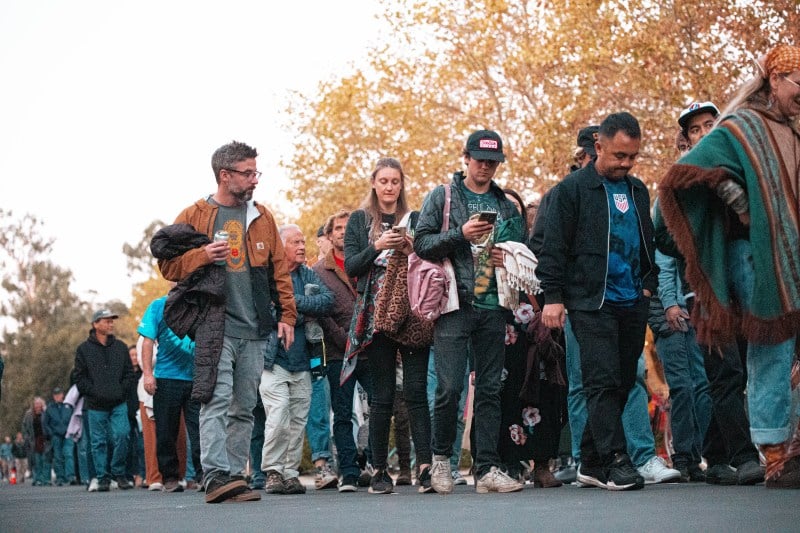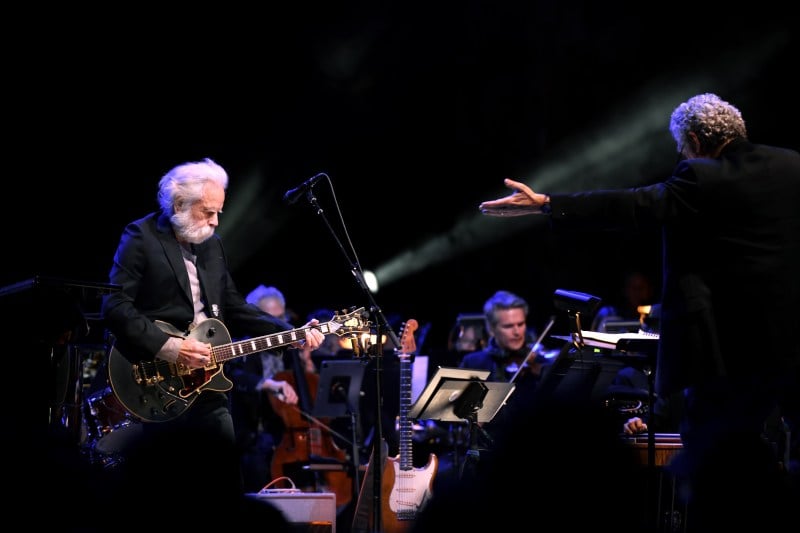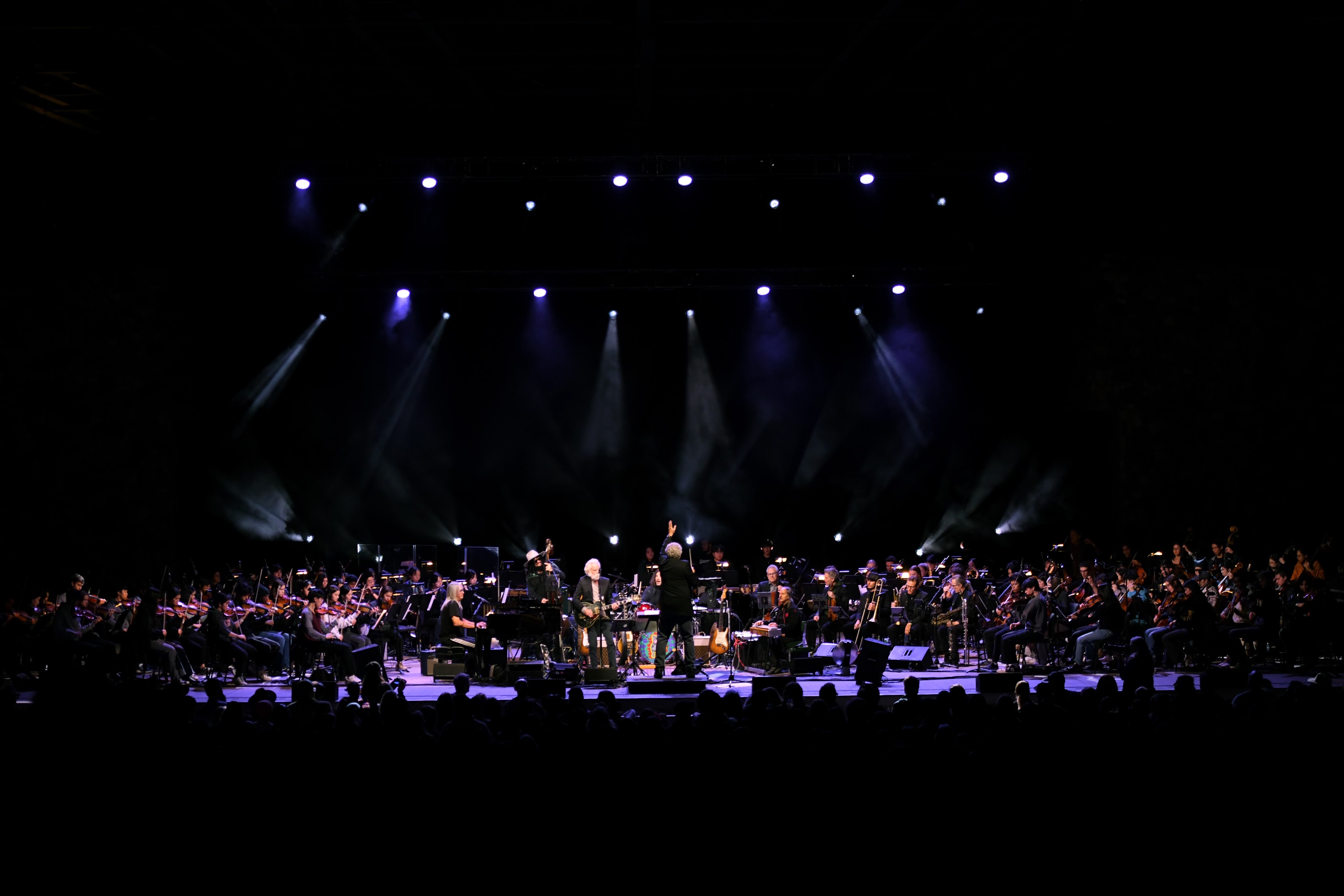Flower crowns, cigarette smoke, a rock band and a 115-person orchestra — this unlikely combination set the scene for an unforgettable evening at the Frost Amphitheater, where Bobby Weir & Wolf Bros took the stage with the Stanford Symphony Orchestra on Sunday.
Weir co-founded the legendary rock band Grateful Dead in Palo Alto in 1965. Bobby Weir & Wolf Bros, a group composed of Weir, Don Was and Jay Lane, embarked on a mission to perform the expansive catalog of Grateful Dead and Weir’s solo albums beginning in 2018.
The amphitheater stage was set with an air of anticipation, and the audience was transported into a magical realm where passionate rock and orchestral excellence seamlessly intertwined.

The audience at the Frost Amphitheater was as diverse as it was enthusiastic. Fans of all ages, from those who had followed Bobby Weir and Grateful Dead since the ’70s to younger generations discovering the magic of their music, gathered under the starlit sky. Devotees of the band arrived in style, wearing vibrant bohemian maxi dresses, embroidered vests and beaded jewelry. It soon became evident that most audience members knew every lyric by heart.

Weir’s performance was nothing short of mesmerizing. His gravelly voice, as captivating as ever, filled the amphitheater, and his guitar playing was a masterclass. Whether he was improvising or leading the ensemble through a soulful rendition of “China Cat Sunflower,” Weir’s passion for the music shone through.
The setlist for the evening was a carefully curated journey through the extensive Grateful Dead catalog, featuring classics like “Dark Star,” “Days Between” and “Uncle John’s Band,” which had the crowd singing along with unbridled enthusiasm. The setlist showcased the band’s versatility and its ability to seamlessly transition from one musical gem to another, captivating the audience from start to finish.
The Stanford Symphony Orchestra, composed of students under the direction of Paul Phillips, beautifully complemented the band. From the soaring strings in “Terrapin, Part 1” to the thunderous crescendos in “Weather Report Suite,” their precise execution and dynamic range added a symphonic richness that elevated each song to new heights.
I was impressed by how the orchestra was able to blend into the rock arrangements, creating a harmonious fusion. The ensemble mostly played in unison, adding an extra layer of depth and grandeur to the overall performance.
The performance did come with flaws. At times, the orchestra seemed to overpower the vocals and guitar, making it difficult to fully appreciate the nuances of the rock group’s performance. Additionally, the shifts between rock and orchestral arrangements sometimes felt abrupt, and I would have appreciated a smoother transition between different musical sections.
These minor technical flaws were overshadowed by the sheer expressiveness of the audience. Throughout the three-and-a-half-hour concert, the crowd couldn’t resist the infectious rhythms and melodies, which was evident in its enthusiastic dancing.
Every song seemed to ignite a flame within the audience members, as they swayed, twirled and let loose with unbridled joy. It was a sight to behold and a night to remember.
Editor’s Note: This article is a review and includes subjective thoughts, opinions and critiques.
